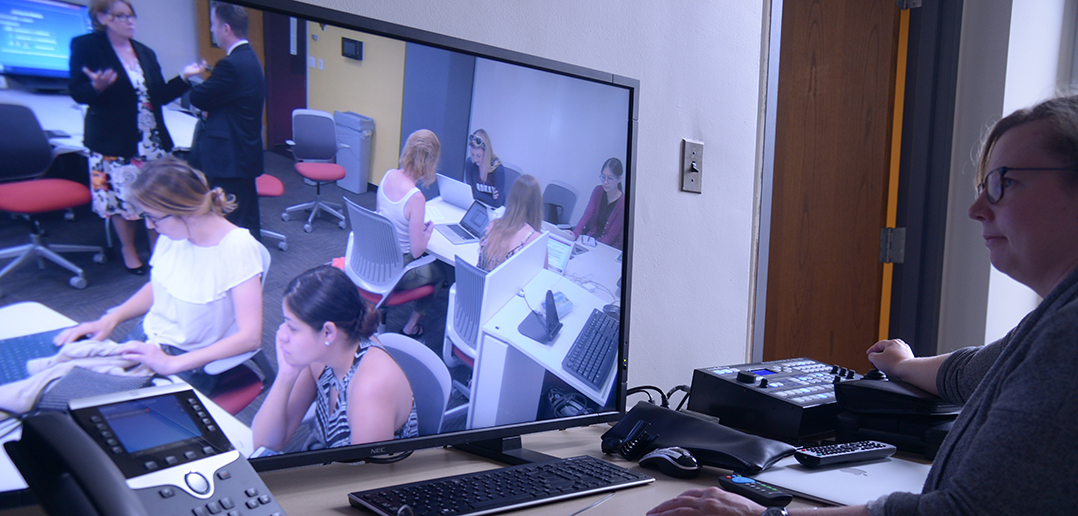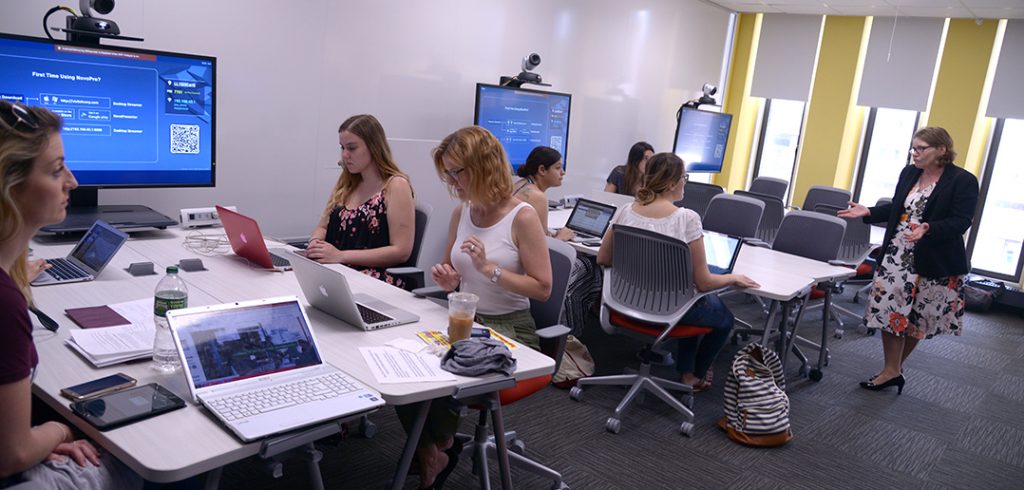Virginia Roach, Ed.D., dean of GSE, and a vocal proponent of classroom technology, has been working on assembling the digital classroom since she began at Fordham two years ago. It opened last week at the Lincoln Center campus with the help of Fordham IT.
“The lab will allow us to provide real-time instruction without disrupting the ecology of the classroom,” said Roach. “It’s also brings us the opportunity to conduct research.”
The lab contains 360-degree cameras that can scan the entire classroom space. There are six tables with flat-screen monitors, cameras, and several unobtrusive microphones. Known as a collaborative learning lab, the setup allows six groups to work on projects together at the same time.
Meanwhile, in a back room nearby, a flat screen provides the professor with the ability to observe the six groups, either separately or at the same time.
The opportunities are manifold, said Roach. There could be six teachers, each managing a group discussion, or one teacher taking care of all six groups. In each case the teacher(s) could have an earpiece from which the professor could offer instructions without disrupting the ongoing class.
“We talk about teachable moments all the time, but we don’t have those moments with teachers unless we interrupt their classrooms,” said Roach. “This technology turns the prevailing practice on its head. It’s changing the paradigm as to how we’ll be able to coach new teachers.”
When asked whether watching multiple group lessons conducted simultaneously might get confusing, Roach compared the lab to a broadcast newsroom.
“We know is that the human brain is capable of taking in instantaneous feeds and acting on [such activity]at the same time,” she said. “We see this kind of technology deployed in broadcast news every day.”
The classroom itself is multi-functional; tables in the classroom are collapsible and can be replaced with tables more suitable for small children. One such class has already been scheduled.
A former teacher herself, Roach recalled the times when supervisors would physically sit in her class and offer feedback on her performance in a meeting after the class.
“But having faculty in the classroom changed the classroom dynamic,” she said. “The fact that I’m getting a correction after-the-fact compromises the support: all I can do is say, ‘Okay, I’ll try to remember that next time.’”
With new technology, however, Roach said the supervisor can be off-site, in front of the 360-degree cameras, and can offer corrective suggestions in real time. The student teacher can better understand the difference and make an alteration on the spot.
“We should not ignore the potential of this kind of technology,” said Roach. “That’s the importance of a research institution–we should always be exploring the edges of potential.”



